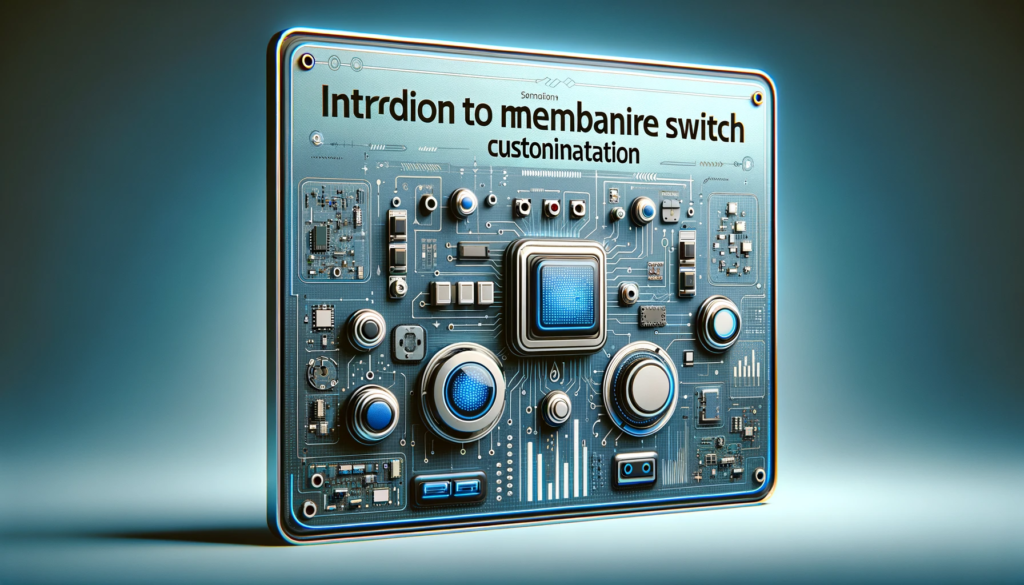Welcome to the world of membrane switch customization. At ElastoKey, we pride ourselves on our ability to tailor each aspect of a membrane switch to meet the specific needs of our clients. This guide will walk you through the various customization options available, demonstrating how each element can be adapted to fit your unique requirements.
Understanding the Basics
What is a Membrane Switch?
A membrane switch is an electrical switch for turning a circuit on and off. It differs from a mechanical switch, which is usually made of copper and plastic parts. A membrane switch is a circuit printed on PET or ITO. The ink used for screen printing is usually silver/carbon or copper.
Components of a Membrane Switch
Key components include the graphic overlay, the circuit layer, the spacer, and the adhesive. Each component plays a crucial role and can be customized for specific applications.
Design Considerations
Choosing the Right Layout and Size
The layout and size of your membrane switch should align with the user interface of your device. Consider the space available, the location of LED indicators, and the size of buttons.
Determining the Necessary Functionality
Identify the functions your switch needs to perform. This might include tactile feedback, backlighting, or integration with touch screens.
Selecting Materials
Types of Materials Used
Common materials include polyester and polycarbonate. Polyester is known for its durability, while polycarbonate offers a balance of flexibility and strength.
Material Properties and Their Impact
The choice of material affects the switch’s tactile feel, lifespan, and appearance. Consider factors like exposure to chemicals, UV light, and mechanical wear.
Graphic Overlay Design
Designing Aesthetic and Functional Overlays
The overlay is the interface between the user and the device. It should be intuitive and aesthetically pleasing. Customization options include colors, textures, and finishes.
Color, Texture, and Branding Options
Colors can be matched to your brand, and textures can range from glossy to matte. Branding elements like logos can be integrated into the design.
Tactile Response and Feedback
Different Types of Tactile Feedback
Choose from metal domes, polydomes, or non-tactile designs. Metal domes offer a pronounced click, while polydomes are softer.
Designing for Optimal User Experience
The choice of dome affects the user’s interaction with the device. Consider the force required to activate the switch and the type of feedback that best suits the application.
Backlighting Options
LED, EL, and Fiber Optic Backlighting
LEDs are energy-efficient and bright. EL lighting provides a uniform glow. Fiber optics allow for intricate lighting designs.
Considerations for Effective Backlighting
Backlighting should enhance the usability of the switch in various lighting conditions without compromising on design.
Circuit Design and Layout
Understanding Circuitry in Membrane Switches
The circuit is the heart of the membrane switch. It can be designed as a single layer or a double layer, depending on the complexity.
Design Tips for Reliable Circuit Layout
Ensure that the circuit layout supports the functionality of the switch while maintaining a compact and efficient design.
Adhesives and Substrates
Selecting the Right Adhesive
Choose adhesives based on the surface to which the switch will be applied. Consider factors like temperature resistance and durability.
Substrate Choices and Their Impact
The substrate supports the entire switch structure. It must be compatible with the chosen adhesive and withstand environmental conditions.
Environmental and Durability Considerations
Designing for Harsh Environments
For applications in extreme conditions, select materials and designs that can withstand factors like moisture, temperature fluctuations, and mechanical stress.
Ensuring Longevity and Reliability
Longevity is achieved through careful material selection and thorough testing of the final design.
Integration with Other Technologies
Touch Screens and Capacitive Touch
Incorporate touch screens or capacitive touch elements for enhanced functionality and a modern user experience.
Incorporating RFID, NFC, and Other Technologies
Explore the integration of RFID and NFC for additional functionalities like security features or data transfer.
Prototyping and Testing
Importance of Prototyping in Customization
Prototyping allows for real-world testing of design concepts and functionalities. It is a critical step in ensuring the final product meets specifications.
Testing Procedures for Quality Assurance
Testing includes actuation tests, environmental tests, and lifespan tests. These ensure the switch performs reliably under intended use conditions.
Production and Manufacturing Process
Steps in Manufacturing Custom Membrane Switches
The manufacturing process involves precise printing, cutting, and assembly. Each step is monitored for quality assurance.
Quality Control Measures
Quality control includes inspecting materials, in-process checks, and final functional testing.
Installation and Maintenance
Best Practices for Installation
Proper installation is key to the functionality of the switch. This section provides guidelines for ensuring correct and secure installation.
Tips for Maintenance and Cleaning
Membrane switches require minimal maintenance. Guidelines for cleaning and general upkeep will ensure the longevity of the switch.
Conclusion and Additional Resources
This guide provides a comprehensive overview of customizing membrane switches. For more information or specific queries, our team at ElastoKey is always available to provide expert assistance and support.

